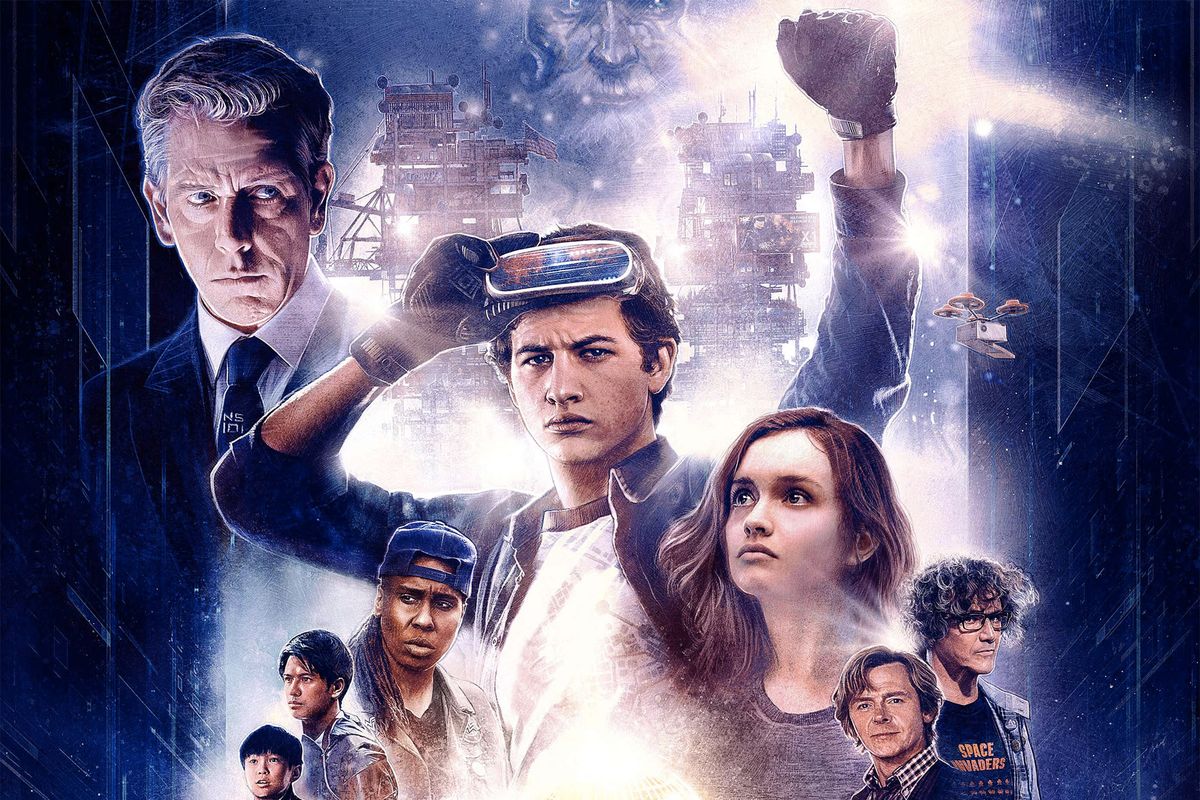Despite the continued troubles behind specific video game-to-film adaptations, it’s also true that video games as a theme and backdrop have started to permeate major Hollywood blockbusters with increasing regularity. On the heels of the massive surprise success behind the video game-themed Jumanji: Welcome to the Jungle from Sony Pictures, which continued for months after its late December release last year, Warner Bros. has now delivered another very impressive video game-themed blockbuster to follow it in Ready Player One, adapted from the Ernest Cline sci-fi novel of the same name, seemingly setting the stage for the floodgates to be thrown open, and for Hollywood to begin an ever-increasing desire for partnership with video game culture.
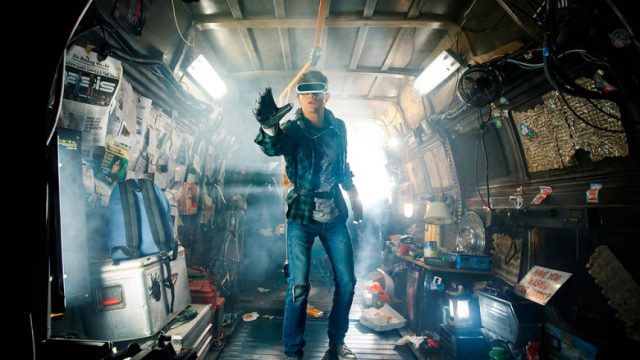
Perhaps most impressive about Ready Player One however, which boasts legendary director, Steven Spielberg at the helm, is that it even manages to consistently match, and occasionally surpass its literary source material, being that rare cinematic achievement that manages to never feel like a lesser product than the book that originally inspired it. Between stunning visuals, lovable personalities, and an outlandish, but strangely engrossing storyline set in a fantastical future driven by virtual reality escapism, there’s plenty in Ready Player One to keep you hooked throughout its well-over-two-hour runtime. There’s no shortage of contrived story conveniences, and the wholesome personalities that drive the plot’s events aren’t really all that deep in terms of their simple goals and personalities, but as a combination of contemporary new ideas and old-school Spielberg fantasy, Ready Player One nonetheless stands as one of the coolest and most memorable blockbusters that you’ll likely see all year!
Ready Player One stars Wade Watts, played by X-Men: Apocalypse’s Tye Sheridan, a young man living in the year, 2045, specifically within ‘The Stacks’, which is essentially a slicker name for the futuristic slums of Columbus, Ohio. Wade is among one of the many, many players of The OASIS, essentially a massively-multiplayer online role-playing game-like virtual reality simulation, which pretty much the entire human race seems to be plugged into in this future. With Wade controlling an avatar, or player character in the game named Parzival, he becomes caught up in the last will and testament of The OASIS’ recently-deceased creator, James Halliday, played by Spielberg veteran, Mark Rylance. As the world hunts for the last remaining keys (literally) behind the legacy and fortune of Halliday within The OASIS, Wade and Parzival are inevitably transformed into accidental heroes that become the means of liberating the world from an oppressive corporate menace, the competing IOI, led by Ben Mendelsohn’s tyrannical CEO, Nolan Sorrento.
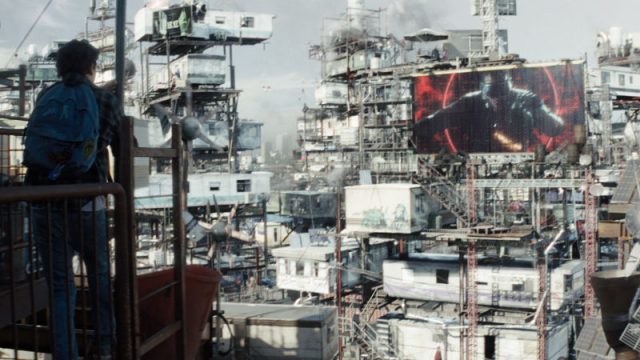
You can probably see a lot of familiar storytelling pieces behind Ready Player One’s heroes before long, all of whom headline a comfortably recognizable, but still very heartwarming mission to keep the love of the game in the hands of passionate players, rather than the greedy capitalist machine. Indeed, the movie’s themes and personalities feel quite timely, as even our modern gaming culture in 2018 constantly sees a struggle between the spirit of independent gaming artists and players, and more large, sprawling ‘triple-A’ game companies that make commercially successful products, yet at the cost of entertaining harmful business practices and vapid, unsatisfying game foundations. As much as Ready Player One’s lead cast will still entertain you if you’ve barely touched a video game in your life, there is an extra sense of heart and power behind the movie for real-life gamers and video game enthusiasts, who will be especially inclined to cheer for the downfall of IOI, and its advocation for snuffing out the real art and passion behind these viewers’ favoured art form.
That’s why it’s a bit disappointing that Sorrento and IOI are ultimately very underdeveloped antagonists. There are teases of a potentially interesting fall for Sorrento peppered throughout the movie, but they’re ultimately overshadowed by the fact that Sorrento is a very transparent moustache-twirling baddie, one that too often just seems to be evil for evil’s sake. IOI is almost comically aggressive with their violent, overworking philosophy towards both game design and employment of game designers in general, and in our hyper-scrutinized, hyper-P.C. modern reality, that makes them feel all the more unrealistic and unbelievable, even for a movie that takes place in the future. T.J. Miller’s clown-ish IOI thug-for-hire, i-R0k, whose OASIS avatar distinctly bears Miller’s voice, even though its user is never seen in the flesh, at least injects some self-aware jabs at corporate recklessness and the unmerited self-importance of so-many so-called ‘keyboard warriors’ simultaneously, but even i-R0k never manages to be more than a stooge for the movie’s cartoon villains.
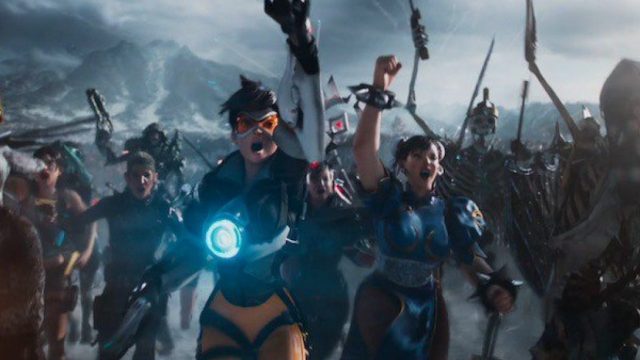
The heroes, by contrast, have a few more layers, but not many more. If you’re going into Ready Player One expecting much in the way of complex, distinctly humanized personalities, then you’ll want to adjust your expectations, because, behind all of the flashy pomp and circumstance, there is a very clear-cut struggle of good vs. evil here. No one will ever question who the good guys are and who the bad guys are in Ready Player One. Despite that, it’s difficult to go into too much more detail surrounding the movie’s other heroes, such as Parzival’s online buddy, Aech, or e-celebrity gamer girl, Art3mis, without divulging considerable spoilers, but, as I said, their archetypes fit very comfortably into young adult protagonists that Spielberg, and numerous other directors making movies in this same thematic vein, have done plenty of times before. Even if there’s not too much to read into with the characters though, it’s also true that Ready Player One nonetheless carries effectively charming heroes and effectively hateful villains, so even if there’s nothing here that you haven’t seen before in terms of the personalities on display, Ready Player One also doesn’t fix what isn’t broken when it comes to reliable Spielberg productions where young do-gooders overcome soulless capitalism.
Ready Player One spans a fairly bladder-busting 140-minute runtime, so as much as the heroes and villains are fairly straightforward in nature, there’s still a lot going on in The OASIS throughout the otherwise straightforward storyline of the movie itself. What begins as a simple contest to find three keys necessary to secure the trillion-dollar fortune and stocks behind this world’s leading VR video game world quickly spirals into a litany of imaginative set pieces, unpredictable challenges, and a virtual world-spanning conundrum that isn’t always exactly what it seems. There are tons of surprises throughout Ready Player One’s world building, even when its boilerplate Easter egg hunt would have fit right in with one of the vintage golden age video games of yesteryear that Ready Player One loves to celebrate so much, despite its frequent super-futuristic VR backdrop. In fact, if you’re an Easter egg fan, then Ready Player One will be absolute cinematic Nirvana for you, because the movie itself is packed to the brim with geeky Easter eggs, a literal treasure trove’s worth of them, even to the point of squashing Disney’s beloved 2012 video game-themed opus, Wreck-It Ralph under its mighty boot!
There has however been some fuss kicked up about Ready Player One’s themes of glorifying pop culture, namely that they sometimes seem to advocate for a complete rejection of modern progress in favour of the Wild West era of gaming that founded the Atari 2600/Intellivision/Colecovision era of the early 1980’s (and yet, strangely, Halliday’s favourite video game was apparently Goldeneye 007, a Nintendo 64 game with a third-party film license). Considering that this proto-video game economy infamously crashed in 1983, before Nintendo and its timeless Super Mario Bros. saved video games from a complete demise in the Western world in 1985, there are certainly some arguments to be made against Ready Player One’s bold outward claims about the world of gaming somehow taking a complete wrong turn via the 1985 gaming platform that ironically saved the industry back in the day. Indeed, when you see that Ready Player One seems to almost deliberately avoid even mentioning any real nod to the Silver Age of gaming that was spearheaded by Nintendo and Sega, as well as PlayStation and later-era Atari products in its twilight (not a single nod is made to Sega or PlayStation in Ready Player One at all, in fact), it not only comes off as head-scratching, but, at worst, it can almost feel like a deliberate attempt to cherry-pick only a few portions of gaming history that the movie specifically likes, rather than taking the whole of it for what it is.
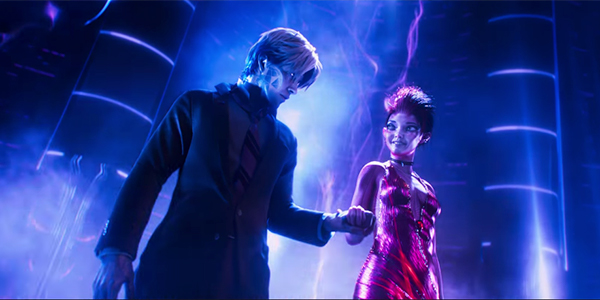
Even if not every theme holds up to scrutiny however, there is a clear and present love for pop culture and geekdom throughout Ready Player One, even if the movie is rather noticeably playing favourites. This is likely how you strangely get more modern Xbox properties like Halo and Gears of War prominently referenced, while this future seems to have weirdly forgotten about other cornerstone video game brands that should logically be thriving with someone in The OASIS. I imagine that there is a litany of rights issues in our real world to keep straight with the sheer amount of Easter Eggs on display in Ready Player One however, so maybe that’s what it comes down to, if you’re inclined to give this movie the benefit of the doubt with what it does and doesn’t show in the realm of gaming culture.
A potentially bigger problem however is that Ready Player One does take a few noticeable storytelling shortcuts whenever it writes itself into a corner, which happens more than once. There are a few highly noticeable plot devices that feel pretty forced and illogical at times, even considering the perpetually unpredictable nature of The OASIS. If you’re a stickler for real-world game design wisdom especially, you’ll frequently find that The OASIS seemingly rejects a lot of conventional real-world game design wisdom to boot, which is further exacerbated by the fact that it blatantly ignores a big chunk of crucial gaming history in favour of focusing on its favourite gaming highlights. This isn’t necessarily a dealbreaker, since Ready Player One never claims to be anything other than escapist fantasy, but it does somewhat disturb the immersion for those well-versed in game theory and game design, who will be bothered by the fact that The OASIS likely wouldn’t work the way that the movie constantly claims it does. Still, if you can take the story for what it is, and forgive some of the necessary contrivances to keep things moving, then Ready Player One’s storyline feels big without feeling over-complicated, and feels exciting without feeling stupid, hitting the right notes when it comes to an odyssey into a larger-than-life VR world and its implications.
Steven Spielberg has repeatedly gone on record to confirm that he’s an avid video game enthusiast outside of his filmmaking career (he was even one of the personalities that helped reveal the modern Xbox One console, which may explain why Xbox gets higher billing than even Nintendo in Ready Player One), and that passion definitely translates into Ready Player One. The real-world settings are also put together with plenty of distinction and imagination, managing to create a dystopian futuristic world that, for once, doesn’t feel like it’s completely copying Blade Runner (at least, outside of deliberate Blade Runner-referencing Easter eggs), and manages to stand on its two feet. That said however, it seems like even the movie itself wants to highlight how dull the real world has apparently become in 2045, with The OASIS completely stealing any set pieces and directing flourishes that truly matter, while this world’s reality constantly feels washed out, dirty and intentionally lifeless in comparison.
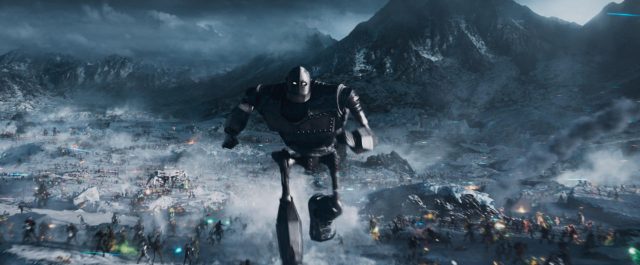
The OASIS is no doubt what most moviegoers will be paying for in the first place however, and for good reason. Spielberg’s direction is energized, playful and wonderfully exotic throughout The OASIS, which feels like both a limitless cache of pop culture personalities (beyond the strange omissions I previously mentioned), as well as an all-new combination of ever-evolving gameplay challenges that constantly treat viewers to new and exciting action beats. Like Wade himself, moviegoers will look forward to every moment in The OASIS, which feels both alien and addictive, providing a hyper-reality that truly seems to carry with it any possibility that you can imagine. This does undeniably lead to an overdose of CGI, mind you, though Spielberg seems to smartly lean into the exaggerated lack of realism that comes with CGI abuse, effectively making it just as much a part of the appeal behind the larger-than-life OASIS, since the proudly ridiculous action scenes at least succeed on the virtue of never unfolding the way that audiences would usually expect them to.
For the more old-school and longtime Spielberg fan especially however, Ready Player One’s more wholesomely adventurous direction provides a well-earned dessert after a slew of heavier and darker Spielberg directing efforts in recent years. As much as this is a movie clearly indulging in modern spectacle and flash, Ready Player One also feels like a successful throwback to the foundations of Spielberg’s classic directing efforts, feeling like a delectable blend between the capitalism-conquering fantasy of Jurassic Park, the unpredictable exploration and mystery of Indiana Jones, and a little bit of the vibrant, mischievous presentation of Hook. As fresh and modern as Ready Player One feels, it also carries somewhat of a back-to-basics approach as far as Spielberg blockbusters go, successfully uniting classic and new sensibilities, and proving that Spielberg still hasn’t lost his touch for creating gratifying, uplifting and genuinely magical adventures that never feel watered-down, despite the whole family being able to easily enjoy them.
Similar to the designs behind combining a classic Spielberg blockbuster with a modern Hollywood spectacle, the soundtrack of Ready Player One combines nostalgic 1980’s synth, between both original compositions and a few licensed 80’s tracks, as well as some all-new orchestra and electronica to sell the futuristic setting. The soundtrack appropriately feels much lighter and more optimistic within The OASIS, even during the more dramatic and action-heavy moments within Ready Player One’s alternate VR reality, but Alan Silvestri’s score never manages to disturb the ultimately uplifting tone behind the movie, even within the bleaker real-world scenes. The sheer orchestral bombast behind movies like E.T.: The Extra-Terrestrial and Jurassic Park isn’t quite captured here, but Ready Player One still finds its own musical voice, through a combination of the recognizable and the foreign, which fits nicely with Ready Player One’s world.
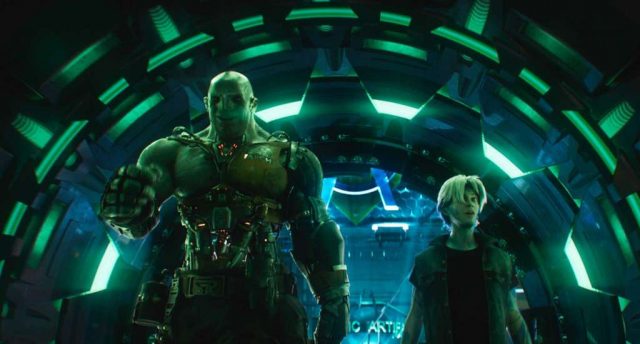
The rest of the sound design is about what you would expect from an audience-friendly video game-themed blockbuster. There’s a combination of powerfully exaggerated game prompts with old-school, Atari-esque bleeps and bloops, which manages to create action and features in The OASIS that feel real enough to have stakes, but not so real that they take away from the fantastical tone. There’s a very delicate balance struck between realism and gaming sensibilities throughout the audio work, which manages to have audiences feel like they’re as much a part of The OASIS as the characters, without feeling too sucked into reality or fantasy. Even the scenes taking place in the real-world don’t make the sound design too unbalanced in either direction for the most part, since this is a family-friendly Spielberg blockbuster, and it’s careful not to make things too serious or overwhelming. You’ll get just the right amount of excitement from the sound design both in and out of The OASIS in the end, especially during the handful of larger action set pieces, which do carry some extra weighty audio punch in premium formats like IMAX, should you want to get the very most out of The OASIS’ hazards.
As I said, it’s undeniable that the real star of Ready Player One is The OASIS itself, which seems to hold more intrigue and depth than the characters and the storyline put together. There has been a lot of painstaking visual work clearly put into realizing this VR landscape, which has enough exaggerated flourishes to feel like a recongizable video game world, yet it also skims just close enough to the Uncanny Valley to create an unnerving sense of hyper-immersion, scuttling between real and unreal with uncomfortable aplomb. As initially overbearing and intimidating as The OASIS and its personalities can seem, this is definitely a world that moviegoers will quickly find themselves lost in and captivated by, which creates a believable atmosphere of just how engrossed in The OASIS this world’s population is. While most of the movie seems to take place within The OASIS, it still feels like audiences barely scratch the surface of what’s truly on offer within it. Despite that however, the elements left up to viewers’ imaginations don’t so much feel like a frustrating tease, as much as a subjective invitation to the viewer to create their own stylish gaming fantasies within this world. This further allows the viewer to become part of the story, and make the undefined parts of The OASIS whatever they may want them to be, further increasing the potency of this visually stunning fantasy world.
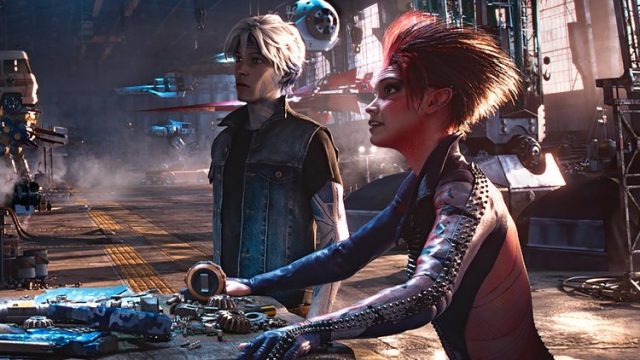
It also goes without saying that Ready Player One is best experienced in 3D, where those visual flourishes throughout The OASIS become all the more captivating and engrossing. The IMAX 3D format feels like the ideal method to experience Ready Player One, but even in a standard digital 3D showing, the world of the movie truly comes to life in ways that you don’t quite get the full power of in 2D. Ready Player One is still a visually outstanding movie in 2D, and will probably go down as one of the most visually interesting and visually well-realized movies to be released in 2018 overall, but it’s very apparent that this is a movie meant to be experienced on the big screen with a pair of 3D glasses. Warner Bros. even made a brief exception to their current preference for 2D-only IMAX releases for Ready Player One, with even the studio agreeing that the 3D format really is the best way to watch this movie, even in IMAX theatres. You’re still getting an exotic and very cool visual masterwork in 2D, but even if you don’t normally take to 3D movies, Ready Player One is worth making an exception for, and worth paying the handful of extra dollars for some 3D glasses. Once you see The OASIS leaping off the screen the way it does in the 3D cut, you’ll be glad you did!
Ready Player One doesn’t have quite as much thematic depth as it sometimes pretends to have, but it does present a consistently compelling and quite often stunning celebration of video games and geek culture. Even divorcing that nerd-powered backdrop however, this is a highly entertaining blockbuster on its own merits as well, one that carries a few extra nuggets and fun nods for lifelong video game enthusiasts, but also provides more than enough fun and whimsy for those who don’t know their Atari from their Xbox. Much like Warner Bros.’ own The LEGO Movie from a few years ago, Ready Player One could have very easily become a soulless and bland corporate-approved product, but thanks to inspired direction, a carefully managed tone and some truly amazing visual work, this movie manages to be something so much more than an onslaught of references to well-known corporate brands and icons.
Naturally, gamers and general fans of video games, of any and all ages, should definitely check out Ready Player One in theatres, especially if they can do so in 3D. Even for everyone else however, Ready Player One’s huge surprise success, despite an initially perceived disappointing box office intake at release (one that was quickly disproven by positive word-of-mouth), really speaks for itself. Considering how much of a self-professed gaming fan Spielberg has always claimed to be, it’s high time that he was allowed to indulge that side of his pop culture fandom in the cinematic space, and fortunately, the wait for a gaming-fueled Spielberg production has been well worth the wait, even if some portions of gaming history get plenty of love and attention, while others feel disappointingly left out in the cold.
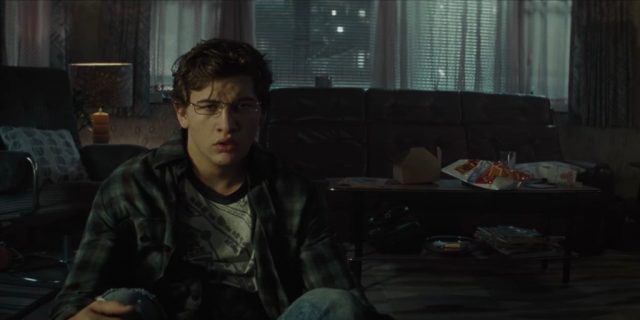
Regardless of whether or not you ultimately agree with Ready Player One’s extensively biased love of simple, accessible and wholesome golden age gaming though, the simplistic characters and occasionally contrived storyline don’t manage to be persistent sticking points in a cinematic experience that is clearly one of the year’s most inviting and technically impressive. Even the source novel is rivaled by this movie adaptation, which is a fantastic testament to how much Spielberg, even today, knows his way around legitimately magical and heartwarming adventure filmmaking. You may not get anywhere near the Oscar-worthy depth of Lincoln or The Post with Ready Player One, as obvious as that may be, but hey, how can we appreciate those hearty meals without remembering how much we also love a great dessert?

